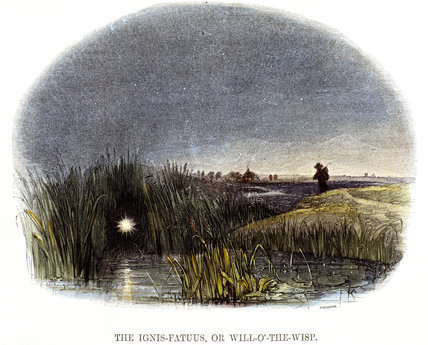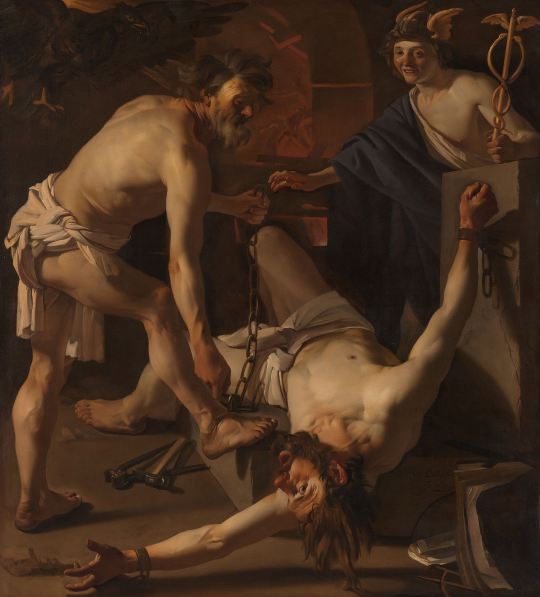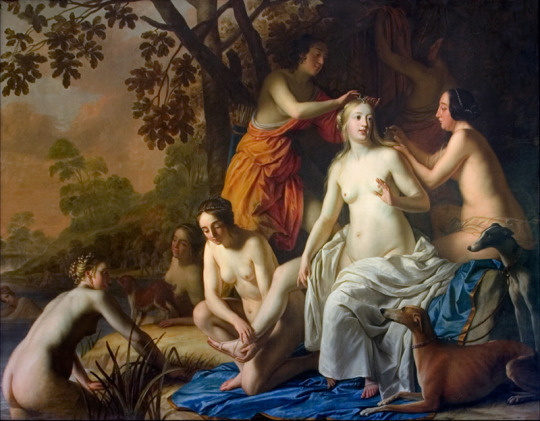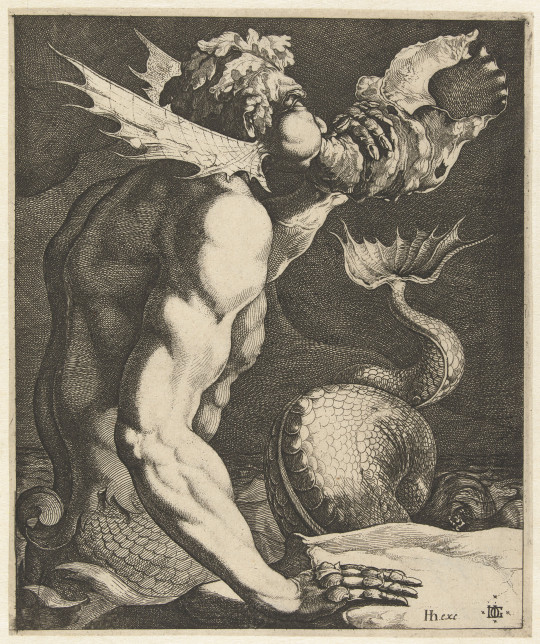#dutch mythology
Text
Arcanua, Dutch deity of magic and the dawn?
What we know.

The bronze and enamel rooster is the biggest source of information we have on this Goddess. In the area surrounding the temple, more roosters like this one have been found, but this is the only one with and inscription. It reads: DEAE ARCANVE VLPIVS/ VERINVS VETERANVS LEG VI V•S•M•L, meaning ‘To the Goddess Arcanua Ulpius Verinus, veteran of the sixth legion, has redeemed his vow, willingly and with reason. The mention of the legion and the name Ulpius Verinus makes it very likely that this little rooster is older than originally thought, probably dating from somewhere between 123- and 142 A.D. Which makes it the oldest mention of the term DAEA we have to date.
The statue is made of bronze, with enamel eyes, beak and wings. The back of the rooster is hollow, which leads historians to believe that it was used to burn candles or perhaps oil in it’s cavity. This statue differs from others found in the Netherlands, which are usually sandstone altarstones depicting humanoid figures, sometimes accompanied by animals. This could mean that the rooster was an important attribute to the Goddess, or it could mean that the statue itself is not from the Netherlands, but could be from Brittania, where more of these roosters were found.
The leaf gives us little more information about who this Goddess was. It reads: D/ ARKANV/ AE/ M•I•AM/ L•M, which we can compement to D(AEA) ARKANVAE M(ARCUS) I(ULIUS) AM(—) L(IBENS) M(ERITO), which means ‘to the Goddess Arcanua Marcus Iulius Am— has devoted this, willingly and with reason’. Nothing is known for sure about Marcus, or why he would devote anything to this Goddess.
What I think.
We don’t know anything else about this Goddess, what she stood for, what her attributes are, it’s all guesswork. So this is what I think this Goddess was. The rooster is a symbol of the dawn, of the rising sun. Combining this with the idea that the rooster was used to burn candles or oil, it could mean that Arcanua was a Goddess of light. A Goddess of the morning and the rising sun, the light after the darkness.
The meaning of her name, ‘the mysterious one’, could point to Her being a Goddess of the Underworld, many Goddesses of mystery are also Goddesses connected to the Underworld. The keepers of the hidden, that which is behind the veil. Many of these Goddesses, like Hecate, are also seen as Goddesses of magic. Arcanua has the word ‘arcane’ almost screaming at you when you see it. Furthermore, roosters are seen by the Celts and Germanics as messengers to the Underworld. A rooster would cry out if there was danger to the soul of a fallen. Combine that with the fact that the rooster was devoted by a veteran, and Arcanua might have been a Goddess who brought the souls of slain warriors to the Underworld.
Correspondences:
Rituals: endings and new beginnings, greeting the sun, unveiling mysteries
Colours: golds and bronzes, set off with bright yellow, red or blue
Symbols: roosters, candles, a golden veil, (autumn) leaves, the sun
Stones: amber, citrine, goldstone
Metals: gold, bronze
Sources:
Book – Antwoord op de vraag, door het Zeeuwse Genootschap de Wetenschappen – Jona Willem te Water
Book – Over de beoefening der Nederlandse mythologie, naar aanleiding der jongste tot dat onderwerp betrekkelijke geschriften – Johan van der Wal
Book – Verhandelingen over het Westland – Derk Buddingh
Book – Nederlandsche volksoverleveringen en Godenleer – L. Ph. C. van den Bergh
Article (PDF) – Born-Burchten – W.J.H. Willems
Website – rgsm.de (in Dutch)
Website – the Limburs Museum (in Dutch)
[Disclaimer, this is an older post, originally on my website that I decided to share here.]
94 notes
·
View notes
Photo

The Stallichtjes [Dutch/Flemish folktales]
A Will-o’-the-wisp, also called ignis fatuus is a floating light that appears at night, usually over a swamp or bogland. There is a perfectly rational scientific explanation – if I recall correctly, it’s related to the oxidation of methane gases and other gases – but they play a significant role in folktales of several countries, each of which provides their own explanation for the mysterious floating lights.
One of them is the stallicht (‘barn light’), also called stalkaars (‘barn candle’) or dwaallicht (‘wanderlight’), supernatural beings from Dutch and Flemish folktales. These burning lights were the souls of children who died unbaptized. There are several tales of people who baptize them by making a cross sign, upon which they disappear, presumably to pass on to the afterlife. One story from Antwerpen tells of a woman who encountered a single stallicht floating around. After her initial surprise, she understood what was going on and said “I baptize you in the name of the Father, the Son and the Holy Spirit”. The light disappeared but suddenly, hundreds upon hundreds of stallichtjes appeared, seemingly out of nowhere. They had seen how the woman successfully baptized their companion and also wanted the chance to get to Heaven. The woman spent the whole night baptizing the lost souls, well into the following morning, and when the last spirit was finally gone, she dropped dead on the spot.
Stallichtjes also play a large role in a myth from Kortenaken (Belgium). As the story goes, there lived a wicked countess in the village of Hoeleden, who absolutely despised any form of religion. She was an exceptionally cruel woman and every time one of her servants had a child, she would drown the baby to prevent the parents from baptizing it (as baptizing was a form of religion and she couldn’t stand the thought of that happening on her lands). (Note that, at least as far as I can find, there is no historical record of such a countess. Unless I am mistaken, this story is purely fiction.)
Her rule was ruthlessly brought to an end, however, as her body was found in the bushes one morning. It was mangled and the heart was torn out, so people assumed it was the work of devils. The body was buried and since then, wailing could be heard in the area at night, accompanied by small floating stallichtjes, which we can assume to be the spirits of the drowned infants.
One night, a man called Waar van Pius happened to pass through the area. Though he was drunk, his heart was in the right place. Most men avoided the area at night because they were scared of the spirits and the ghostly wailing, but Waar was far too drunk to be afraid. When he heard the wailing, coming from underneath the bridge and accompanied by floating lights as usual, he yelled “what do you want, you hellish hooligans!” and a disembodied voice replied “baptism.” As such, the man put the tip of his whip in the stream and sprinkled water over the stallichtjes to baptize them. They disappeared, finally able to pass on to the afterlife, but suddenly a floating, bleeding heart appeared, surrounded by stallichtjes. This was the heart of the countess. Waar van Pius had enough of this nonsense and resumed his path, and the bleeding heart fell into the stream.
Sources:
Peeters, K. C., 1979, Vlaams Sagenboek, Davidsfonds, Leuven.
https://www.volksverhalenbank.be/mzoeken/zoeken_Subset.php?Zoek=Verteller&Term=9480
(image source: engraving from Josiah Wood Whymper, 1849)
95 notes
·
View notes
Text
15 Days of Deity: Baduhenna
Day 5: Names and Epithets
(Disclaimer: this is all UPG)
Goddess of the Darkened Woods
Lady of the Marshland
Battle-crow
the Frisian Valkyrie
Wise Woman/White Woman (connection to Völva and Witte Wieven)
Lady of Magic and Witchery
Faerie woman (again, connection to Witte Wieven and the Morrigan)
She of Roots and Ravens
Battle-Sister
11 notes
·
View notes
Text

Nymphs by a Fountain by Peter Lely (1655)
#peter lely#art#paintings#fine art#17th century#17th century art#baroque#baroque art#dutch artist#dutch art#dutch golden age#mythology#greek mythology#naiad#water nymph#classic art
604 notes
·
View notes
Text

"PROMETHEUS BEING
CHAINED BY VULCAN"
DIRCK VAN BABUREN // 1623
[oil on canvas | 201 × w 182 cm.]
#dirck van baburen#baroque#caravaggism#mythology#painting#dutch golden age#prometheus#vulcan#17th century#dutch#art#u#PD
247 notes
·
View notes
Text

Peter Lely (1618-1680)
"Diana Kirke, later Countess of Oxford" (c. 1665)
Oil on canvas
Located in the Yale Center for British Art, New Haven, Connecticut, United States
Lely depicted Kirke with deliberate irony, casting her as Venus with a rose and bare breast, rather than as her namesake, the chaste goddess Diana.
#paintings#art#artwork#genre painting#female portrait#peter lely#oil on canvas#fine art#yale center for british art#museum#art gallery#dutch artist#portrait of a woman#gold dress#dresses#clothing#clothes#curly hair#history#roman mythology#aesthetic#aesthetics#1660s#mid 1600s#mid 17th century#a queue work of art
144 notes
·
View notes
Text

Philemon and Baucis by Rembrandt van Rijn
Dutch, 1658
oil on panel transferred to panel
National Gallery of Art, Washington, D.C.
#Philemon#Baucis#mythology#Metamorphoses#Ovid#Rembrandt#Rembrandt van Rijn#Dutch#Dutch Golden Age#art#painting#National Gallery of Art#NGA DC
150 notes
·
View notes
Text

Johannes Josephus Aarts (Dutch, 1871–1934) - Oedipus and the phoenix
119 notes
·
View notes
Text

Juno, 1596
By Hendrick Goltzius
#art#fine art#dutch art#dutch artist#dutch painter#engraving#16th century art#goddess#mythological art#mythology#roman mythology#european mythology#graphic art#classical art#european art
87 notes
·
View notes
Text

The Abduction of Europa by Rembrandt, 1632.
#classic art#painting#rembrandt#dutch artist#17th century#baroque#dutch golden age#mythology#abduction of europa#women#bull#horses#lake
36 notes
·
View notes
Text
Dorestad Fibula

The Dorestad Fibula (brooch) was found in the Dutch village Wijk bij Duurstede, the successor of the Early Medieval Emporium Dorestad.
Dated between 775-800, this brooch is classified as Frisian. Decorated with gold, garnets from East Asia, pearls, enamel and glass, this brooch belonged to an exceptionally rich merchant.
The brooch depicts the tree of life with leafs and fruits. The green inlay portray stylized bird heads.
RMO Leiden, Netherlands
Object nr. F1978/1.1,
Found in Wijk bij Duurstede-Utrecht, Netherlands.
#archaeology#museum#field archaeologist#field archaeology#Dorestad#emporium#emporia#Netherlands#Dutch#Germanic#Viking#Frisian#Frisia#Merovingian#Frankish#charlemagne#Merovingian archaeology#Viking archaeology#Viking mythology#tree of life
209 notes
·
View notes
Text
Fern's (new) introduction to the Gleaming Grove
The Gleaming Grove is the name I use for my personal pantheon. It is a mix of historical, unrecorded, and constructed deities that I have been honouring for a little over a year now. Some of these deities have been in my life for quite a bit longer, some even right from the start.
Through personal interactions with these deities I have gotten to know them beyond what is historically known. This is called UPG, or Unverified Personal Gnosis. So please, keep in mind that these are my personal interpretations of these deities. Also, as I walk this path and learn more about myself and about these deities, the pantheon might change.
Now, allow me to introduce you.
Cernunnos: Horned Hunter – historical and unrecorded Gaulish deity of the forest, of animals and the hunt. He is the leader of the Wild Hunt and the King of the Fae. He is the god of the liminal, the in between. The cycles of nature – death, decay, and life again.
Nehalennia: Wildmother – historical Dutch deity of nature, the sea, harvest. She guides travelers over sea, guiding them with her stars, or with profitable winds. She is the tempest and the storm, but also the cooling breeze on a hot day. She is the deity of agriculture, especially orchards. Her travel over the sea also includes being a psycho-pomp, guiding those who have passed to their afterlife.
Baduhenna: Rootwoman – historical Dutch deity of the forest, magic, and war. They protect the sacred places and fight against any who wishes to take it away. Protects the oppressed and gives them the tools and power to fight against their oppressors, in both weapons and magic.
Elen of the Ways: Wayfarer – historical or constructed deity of roads and pathways, of journeys both physical and spiritual. She guides us with her lit lantern when we are lost. Labyrinths are dedicated to her, especially as a way to travel inward. She protects us when we travel and nudges us in the right direction of where we need to be. An antlered deity carrying a lantern and surrounded by green.
Nemetona: Sanctuary – historical Gaulish deity of sacred spaces. Protector of boundaries. Both the sacred spaces we creating when practicing witchcraft, as the sacred spaces that are our home and our personal boundaries.
Avalon - Lady of Avalon. Goddess of healing, magic, apples, and harvest. Queen of the Fae, keeper and protector of magic.
Hearthlight – unrecorded and constructed deity of home, hearth, and community. Protects the home and hearth, provides and guards warmth and love in the home. Connections and community. Sharing what you have and taking what you need. Perhaps a mantle shared between different deities
Loki: Trickster – historical Norse deity of mischief, change, laughter. God of the outcasts, challenges societal norms and brings necessary change.
Venaris: Lady of Flowers – unrecorded deity of spring, of flowers, love, joy, mirth, and art. Beauty, music, poetry and inspiration. She invites us to dance to the tune of the seasons, to stop and smell the roses, and see the small wonders around us. Is related to Eostre/Ostra and Meda
Liyesa: The Iridescent One – historical and constructed deity of beauty, self love and -acceptance, freedom. She teaches us there is beauty in all of us, and helps us learn to love and accept ourselves as we are. Breaker of Chains, she guides us to break free of the chains society and our own perfectionism throw around us. She grants us second chances should we need them.
Holle: the Veiled Silence – constructed and historical Dutch deity of silence, of winter and of secrets. She is the silence of snowfall. She urges us into contemplation and introspection, and what secrets mean and how to keep them.
Arawn - historical Welsh deity of the Underworld, the wild hunt, loyalty, and honour. King of the Fae and Lord of the Dead. Also called Gwyn.
Ashka: Ashkeeper – unrecorded deity of the dead, graveyards, and memories. Gathers and keeps the memories we have of those who have passed. Keeps the ‘souls’ safe until they are ready to continue to wherever they choose their afterlife to be.
the Morrigan: Crowmother – historical Irish deity of war, magic, and sovereignty. She is connected to Baduhenna both through historical sources and my own interaction with both.
Mona: Moonmother – historical deity of the Moon, magic, the night. Bringer of change and moving through cycles. Mother/sister to Starsister. Void created the stars, Herta (the Earth) and the moon. We gave them life in the form of divinity. Moon came first, and she inspired humans to give her a sister/daughter.
Stēra: Stardancer – unrecorded deity of the stars and the night sky, of navigation and of hope. A light in the dark, a guide to lead us home. She dances across the sky, leaving a trail of stars behind.
Herta/Arda: Greenmother – historical Dutch deity of the Earth, nature, growth, and harvest. Her day was called “Hartjesdag” or “Heart’s Day” and was a day for collecting magical herbs to bless the home.
Gahella: Void/Creation – The emptiness from which anything can be created (chaos in Latin) The depth of space. The Divine Chaosyne. Void is the emptiness that was here before the big bang. The void from which creation springs forth. They are the darkness between the stars that birth the galaxies and starfields. Chaos is needed to keep things from getting stagnant, and is the catalyst for change.
Werda: Wordweaver – unrecorded deity of words, stories, magic. Muse of writing. They spark the inspirational spark and guide the words on paper. They are the keepers of knowledge, both mundane and magical.
Lycke: Lotweaver – unrecorded deity of fate, luck, and the tapestry of life. They weave the threads of life, guide and watch over them. Fate is not set in stone, choices and such will always have an influence on the tapestry.
Klaithe: Craftweaver – unrecorded deity of creativity, artistry, and artisans. The joy of creation for the sake of creation. The inspirational spark that is within all of us. The need to express our true selves in our own ways.
Spirits honoured in my practice: the Good Neighbours, Alven, Merfolk, Dragon, Unicorn. My ancestors of blood and bone, land, heart, spirit, and craft. The spirit of Wolf and Crow.
[Updated March 9 2024]
#deity#personal pantheon#gleaming grove#unrecorded gods#constructed pantheon#constructed gods#gaulpol#dutch mythology#dutch deities#long post
25 notes
·
View notes
Photo

The Horse of Malegijs [Dutch/Flemish folktales]
Malegijs, often called Maugris in English, is a character from medieval sagas, who supposedly lived in the 8th century. He was a wizard or sorcerer and played a somewhat important role in Dutch and Belgian folktales because he freed the mythical horse Bayard.
Interestingly, there is also a folktale about another horse which appears at first glance to be entirely unconnected, yet is referred to as either ‘the horse Malegijs’ or ‘the horse of Malegijs’. I suspect the name ‘Malegijs’ was eventually used to refer to wizards or supernatural things in general.
Anyway, the story goes like this: in 1521, three young girls from Ieper (pronounced ‘Ee-pur’) returned from a trip to the local fair. Their names were Maxima Vanden Driessche, Magdalena Ghijselin and Lucia Larmeson. They were neighbours. On the way home, the three girls found a small horse of exceptional beauty. It had smooth white skin with almost no fur, its torso was decorated with flowers, its tail had a beautiful golden colour and on its sides were decorations that resembled green parrots. It was wearing a saddle made from pink damask. An unassuming servant came running and claimed to be the owner of the animal. He asked whether the girls had ever seen anything like it, which they had not, and claimed that the horse was from Japan. According to the servant, the horse would never let itself be ridden by a man but would exclusively carry women. A charming and smooth talker, he eventually managed to convince the three curious girls to ride the horse. Magdalena, the bravest of the three, sat in front. But they soon discovered that they had been tricked, for the horse did not walk at a slow pace like the servant had promised, but ran away at a dizzying speed.
After nightfall, the horse suddenly stopped in front of a large and mysterious castle. Through its windows shone a weirdly bright light and joyous music could be heard from within. The horse – still carrying its frightened riders – entered through the gate, accompanied by the servant who had somehow arrived at the castle. The gates closed behind them. Within the castle, they were greeted by a lord with expensive and exotic clothes, and his entourage of noble ladies. The lord wore a Turkish hat (with a little mirror on it and gemstones at the side) and was dressed in clothes made from damask. He politely invited the three bewildered girls to eat dinner with him.
Afterwards, the girls wanted to return to their homes, for they had travelled a very long distance and it would take a long time to walk back. But the castle lord demanded that they join him in a game of ‘pand’. I do not know what kind of game this was, and I can not find information about it, but we can assume it was some form of gambling game as the girls lost almost all of their belongings to the mysterious man. Clad in their underwear and having lost their jewelry, they were thoroughly humiliated and wished to leave. The man said “now, let us toast to the horse Malegijs, which has brought these three ladies to our castle in such a wondrous manner”. Immediately after speaking these words, the eyes of the castle’s ladies suddenly flashed with a supernatural light. They were each given a glass with an unknown beverage, but only managed to drink a few drops before they suddenly awoke from what appeared to be a dream.
But when they got up and looked around, the three girls found themselves in a hole in the ground, atop the Kemmelberg (a hill in West-Vlaanderen, which is a decent distance from Ieper). Curiously, they were still half naked. And so they wandered around until they found a poor farmer’s house. It was still night but they woke the man and told him their story and asked for clothes and transport. The man believed them, claiming that the Kemmelberg was haunted by a group of witches. Sometimes he could hear their music and see flashing lights. But his wife disagreed: she claimed that these strange girls from Ieper, who showed up in their underwear at night and told such strange tales, were clearly witches themselves and should be burned alive. Her husband tried to grab the girls but they managed to flee.
The girls came upon an inn and told the owner that they were robbed by bandits (they didn’t want to tell the truth, lest the innkeeper accuse them of witchcraft like the farmer had done). The man took pity on them and offered to clothe them and bring them home. As luck would have it, the man was a close friend of Magdalena’s father. He ordered a servant to prepare his carriage and so they left.
But the innkeeper lost his way, which he assumed to be because of witchcraft, as he had travelled that road many times before and knew the roads like the back of his hand. A black shade appeared and floated over the horses, and they ran through fields, rivers and forests without breaking a sweat. But the sun came up and the shadow disappeared, for it had no power during the day.
It was a long way home, but eventually the three girls arrived at their destination.
The moral of this story is clear: girls shouldn’t travel with strange men. But I don’t think this was a very widespread tale since all sources are nearly identical, down to the grammar of the sentences. Thus, I suspect they were all derived from Wodana 1843 (a 1967 magazine about Flemish folklore and mythology) which is cited by my second source here. It was written by professor Karel Peeters, who is also the author of my first source. I am uncertain how old this tale is, but I doubt it’s a medieval story. If I had to guess, I’d say the story was first told in the 19th or 20th century.
Sources:
Peeters, K. C., 1979, Vlaams Sagenboek, Davidsfonds, Leuven.
https://www.dekroniekenvandewesthoek.be/malegijs-paardje/
https://www.volksverhalen.be/Ieper_PaardjevanMalegijs
https://middelkerke.bibliotheek.be/en/catalog/karel-c-peeters/wodana-1843/book/wise-westvlaanderen_3093016?branch=Middelkerke%2FWestende
(image: statuette made by Adhémar Vandroemme)
82 notes
·
View notes
Text
15 Days of Deity: Baduhenna
Day 3: Symbols and Attributes
(Disclaimer: this is all UPG)
Ravens and crows
Wolves
Forests and marshland
Moss and ferns
Garnet, hematite, and deep amethyst
Sword and shield
Handaxes
Deep reds, greens, and purples
Mushrooms
War and battle-frenzy
Fighting oppression
Sovereignty
Forests
Magic, esp. forest magic, hedgeriding, anything connected to the Fae, shapeshifting, battle magic, protection
Day 4: Favourite Myth
There are no myths connected to Baduhenna. So instead here is the translation of Tacitus' Annals, from wikipedia:
Soon afterwards it was ascertained from deserters that nine hundred Romans had been cut to pieces in a wood called Baduhenna, after prolonging the fight to the next day, and that another body of four hundred, which had taken possession of the house of one Cruptorix, once a soldier in our pay, fearing betrayal, had perished by mutual slaughter.
74. The Frisian name thus became famous in Germany, and Tiberius kept our losses a secret, not wishing to entrust any one with the war.[3]
5 notes
·
View notes
Text

Diana with Her Nymphs by Gerard van Honthorst (1650)
#gerard van honthorst#art#paintings#fine art#17th century#17th century art#baroque#baroque art#dutch golden age#painting#dutch art#dutch artist#mythology#roman mythology#diana#artemis#roman goddess#classic art
479 notes
·
View notes
Text

“A TRITON BLOWING ON A SHELL”
JACQUES DE GHEYN: II // 1616-20
[etching on paper | 198 x 165 mm.]
70 notes
·
View notes